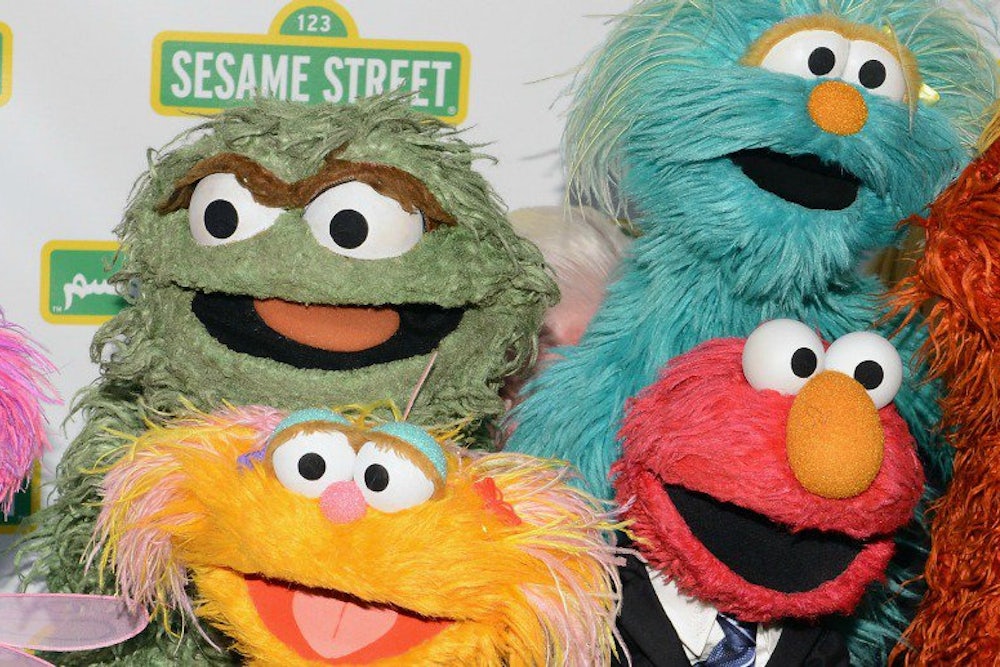Last week, we released a study that showed children who watch “Sesame Street” do better in school, particularly children who are most at risk of falling behind. The release of our paper generally inspired one of two kinds of reactions: happy nostalgia from the many adults who have fond memories of this iconic show, or relief from the many tired and involved parents of young children who discovered that perhaps occasionally putting their kids in front of TV isn’t so bad after all.
Then there was a third less common but worrisome reaction, typically captured in headlines suggesting that we can just do away with preschool. One headline boasted: “‘Sesame Street’ is so good for kids, scientists say it could probably replace preschool.” Another headline read “‘Sesame Street’ Is Just as Effective as Head Start—and Much More Diverse Than Most Preschools.” Some raised the question of whether the show was a suitable replacement, with varying answers.
To be sure, our study concludes that “Sesame Street” has some educational effects that are comparable in size to that of Head Start. But we do not believe that “Sesame Street” should substitute for preschool or other enriching activities. We are keen to shift the conversation toward the encouraging policy implications coming out of our work. We think the most important implication of this research is that TV—an inexpensive and readily accessible tool—can be used as a powerful and positive force to improve educational outcomes.
We should not swap one good thing for another. Rather, we support the role that TV and technology more generally can play in assisting parents, caregivers, teachers, and policymakers to augment more traditional preschool interventions. This is most important not for the kids whose parents are using TV as an occasional break from more intensive forms of enrichment, but rather for the kids who do not have the benefit of enriching and educational activities all day long.
Our study recognizes that “Sesame Street” was essentially the first MOOC (Massive Open Online Course), providing educational content to millions of viewers for free. We document the impact of its introduction in 1969 on the generation of children who were first exposed to the show during their preschool years. Television technology at the time meant that children in some areas had better broadcast access to the show than those in other areas. Focusing on children from non-rural parts of the country, we found that children who lived in places with better access to the show did better in elementary school, as compared to those with limited access and those who were older at the time the show was introduced. They were more likely to start school on time and progress at the appropriate grade for age. Importantly, we found that this effect was larger among children who grew up in economically disadvantaged areas.
The world today—both on TV and for children more generally—is clearly a very different place from what it was when kids first asked “how to get to Sesame Street.” Children have far more opportunities to engage with educational content, both in the real world and in the form of electronic media. But “Sesame Street” is still going strong and continues to adapt to a changing world. Other educational children’s programs have been introduced that can also hold children’s attention and teach them important lessons about reading, math, and the world around them. For instance, results of a recent research trial shows that children who watched the show “Super Why!” saw improvements in reading scores compared to those who did not, with the largest improvements seen among kids from lower-income households.
The findings of our study raise the possibility that TV and electronic media more generally can be leveraged for real social good. They can be used to improve educational outcomes for all children and help address income and racial gaps in children’s school readiness. The value of an attentive, caring teacher in a pre-K classroom can be tremendously positive, but parents and schools can augment that experience with well-designed electronic content. “Sesame Street” can enhance preschool learning in the same way that MOOCs have the potential to supplement college classes over the Internet. Or the way Khan Academy videos–also free and readily available on the Internet—might supplement learning for older children. Think of it as “Khan Pre-K.”
The average preschooler in the United States watches four hours of television a day. Let’s take advantage of the fact that many toddlers are watching TV to expose them to beneficial content. Parents and caregivers who are letting their young children watch TV should put on “Sesame Street” or other educational children’s programs. Preschools and daycare centers should think about ways to effectively incorporate “Sesame Street” into their day, or encourage children and their parents to watch it when they go home.
Our research indicates that TV, when used well, can be an effective and inexpensive educational tool. It also has the potential to help close gaps in educational performance between children of the rich and poor. Early childhood is too important of a time not to use all tools at our disposal—and that means that “Sesame Street” should be used in addition to, not instead of, preschool.
